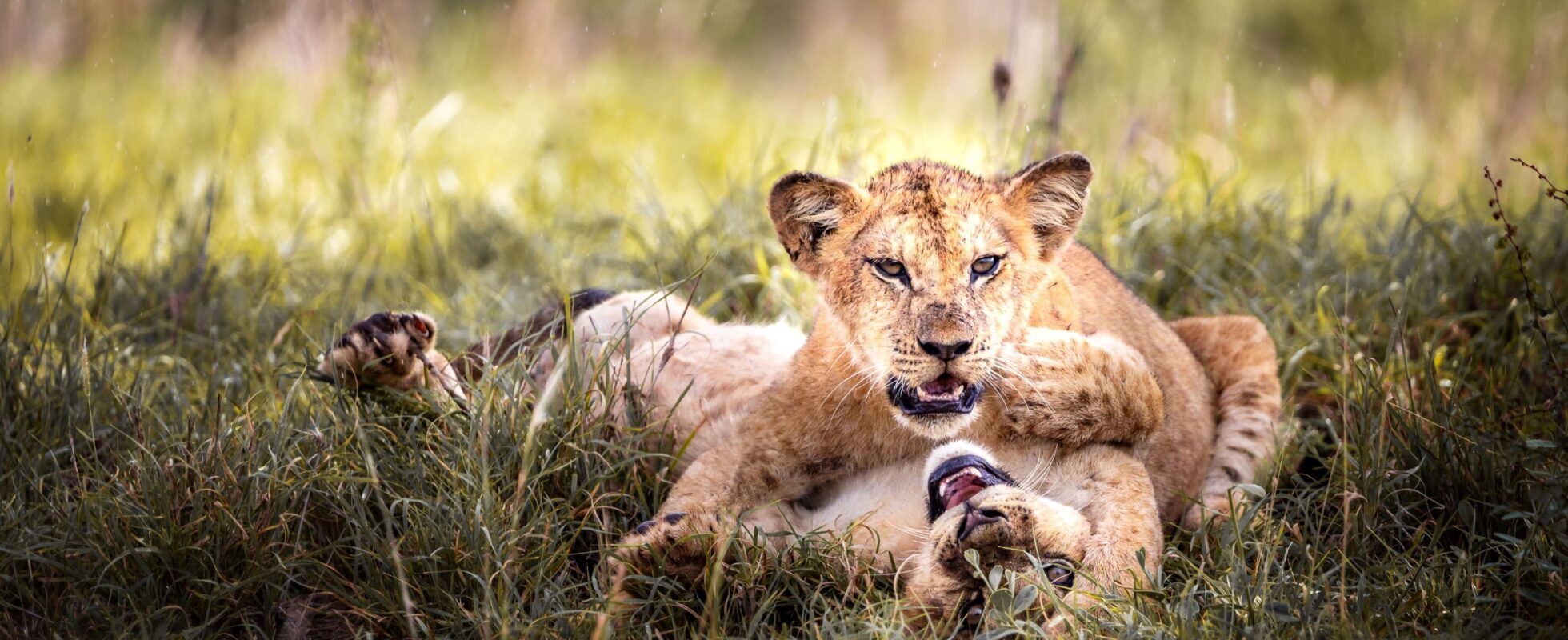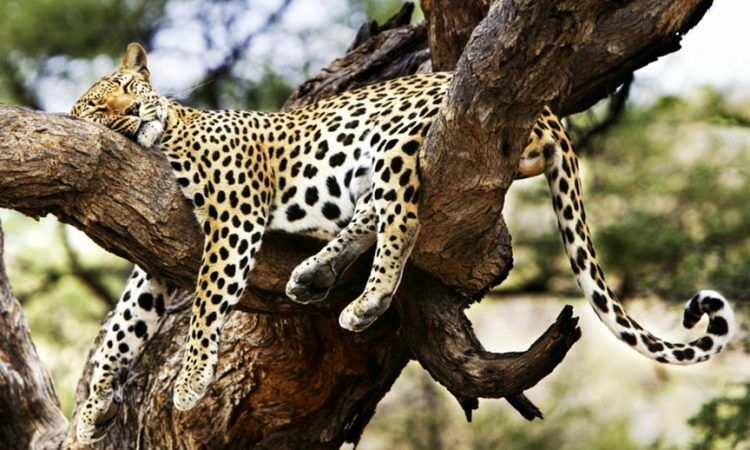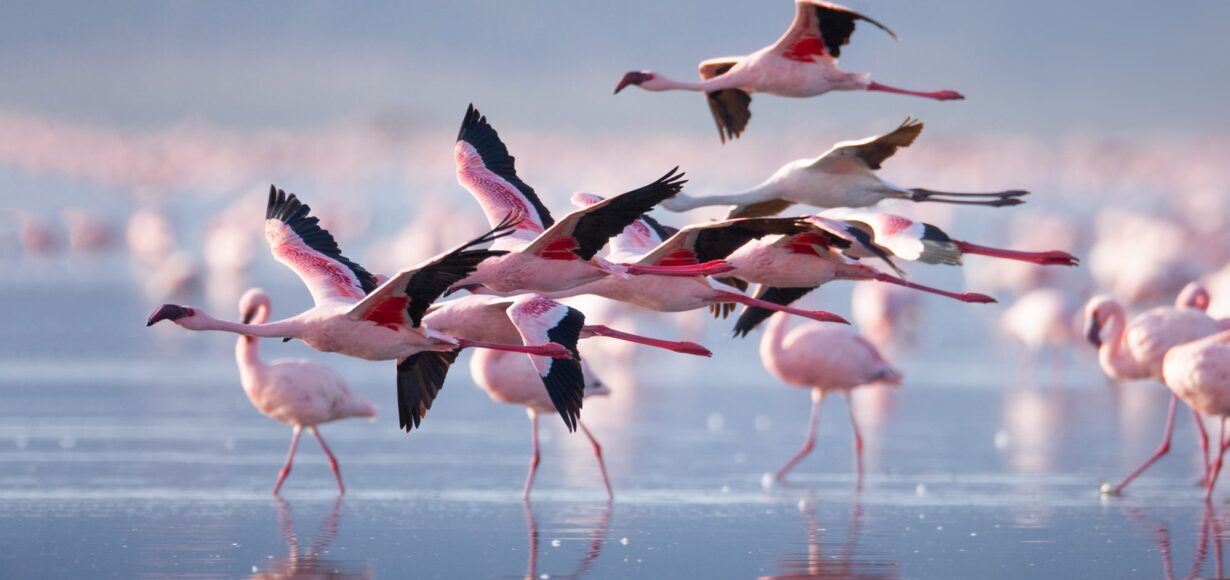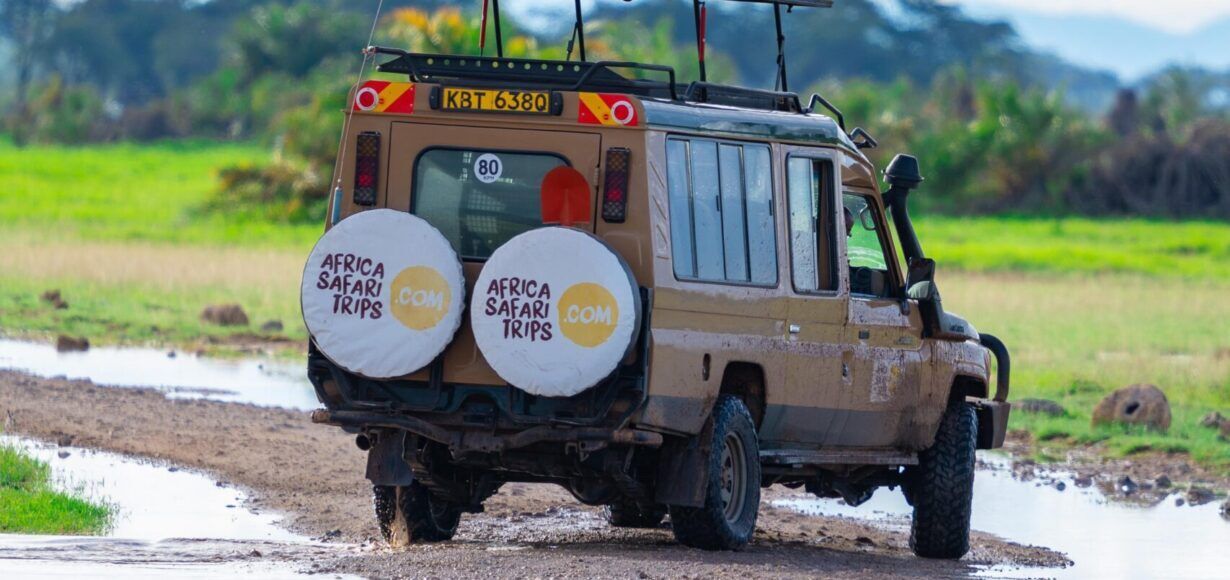Tsavo West National Park may be smaller and have less wildlife than Tsavo East National Park, but its scenery more than makes up for it. Shetani Lava Flows, Mzima Springs, the Chaimu Crater… the different environments within the same park are absolutely fascinating. With 9,065 square kilometres, it’s home to the Big Five (lions, buffalos, leopards, elephants and black rhinos within the Ngulia Sanctuary). They roam the land along with giraffes, zebras, antelopes and many different birds – and most notably the endangered African wild dogs which get spotted here regularly. The park was established in 1948 and even has remains of prehistoric settlements.
Volcanic rock
With green hills, savannah, water and lava rocks from nearby volcanoes, the landscape is varied. Visit the Shetani lava fields: fifty square kilometres of black volcanic rock spread throughout the country. Shetani means “devil” in Kiswahili: the flows formed during the last eruptions a few hundred years ago, and the locals believed that this hot lava was the devil himself coming out of the earth. Since the last eruption 200 years ago, there is practically no fertile soil in the area surrounding the volcano.
Natural Springs
Drive past Mzima Springs, a series of four natural springs with fifty million gallons of crystal clear water gushing from beneath parched lava rock. Meltwater from Mount Kilimanjaro sometimes spends 25 years underground here. Lava rocks filter it before it emerges again at the Mzima springs. The stream with pools and rapids is only two kilometres long – then it disappears again under the surface of a solidified lava flow. Hippos and crocodiles love the clear, fresh waters of Mzima Springs and are easy to spot. An underwater structure with a window offers the opportunity to observe the animals underwater.
Tsavo West is also home to the Ngulia Sanctuary, established to protect the critically endangered black rhino. In 1940, there were an estimated 20,000 rhinos in Tsavo National Park. By 1989, however, the rhinos had been so decimated by poaching that only fewer than 20 remained. Thanks to the sanctuary, the number of rhinos is now back up to more than 100.
Activities in Tsavo West National Park
- Go on a safari (must-do!)
- Visit the Mzima Springs
- Pass by the Shetani Lava Flow
- Watch rhinos at the Ngulia Sanctuary
How to get there
Tsavo West National Park is situated right between Mombasa and Nairobi, which makes it a five to six hour drive from either city. It’s also possible to fly from either Mombasa or Nairobi.
Climate
Kenya has a cold season from June to November with average temperatures of 20°C during the day. Nights can get cold during this season, so it’s best to take a sweater. Mid-October to November is the short rainy season, after which temperatures rise up to 30°C during the day from December to April. April and May come with showers again as this is the long rainy season. It normally doesn’t rain throughout the day as one sees sunny mornings with rain clouds building up towards the afternoons and evenings.
Best time to visit Tsavo West National Park
The dry months of June to October and January to February are best to visit Tsavo West National Park, when conditions in the park are favourable for wildlife watching. During the peak of the short rains (November) and the long rains (April and May) road conditions can be more challenging.
Information and facts
On 9,065 square kilometres, Tsavo West National Park makes every safari dreams come true. From the famous Big Five to the usual suspects of African wildlife – the heart of animal lovers will surely skip a few beats here. And if you’re into nature, you can look forward to the lava flows, fresh springs and a breathtaking crater.
Most common animals
- Rhino
- Elephant
- Buffalo
- Leopard
- Lion
- Cheetah
- African wild dogs
- Giraffe
- Zebra
- Crocodile
- Mongoose
- Hyrax
- Dik-dik
- Lesser kudu
- Porcupine
- Prolific birdlife features 600 species
Facts about Tsavo West National Park
- 9,000 square kilometres (3,474 square miles)
- Established in 1948
- The Big Five and many other animals
- Volcanic rocks filter the water that comes above ground in Mzima Springs
- Shetani means devil in Kiswahili and refers to the local belief that the hot lava of the Shetani fields was made by the devil
- View at Mount Kilimanjaro in Tanzania
















